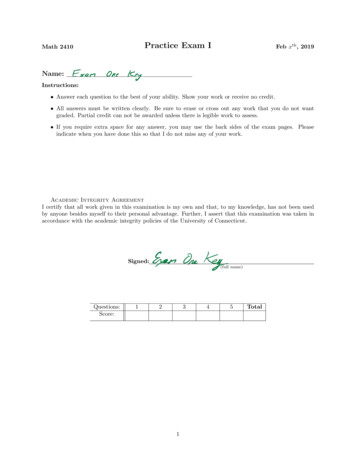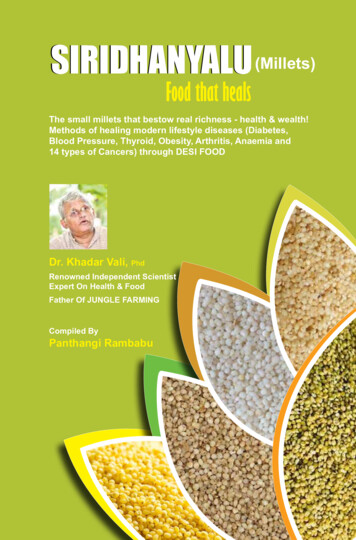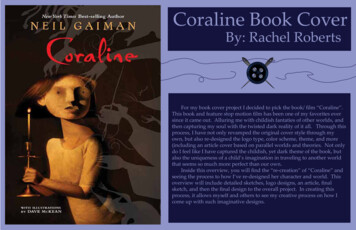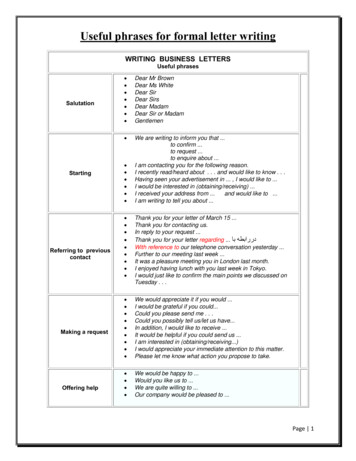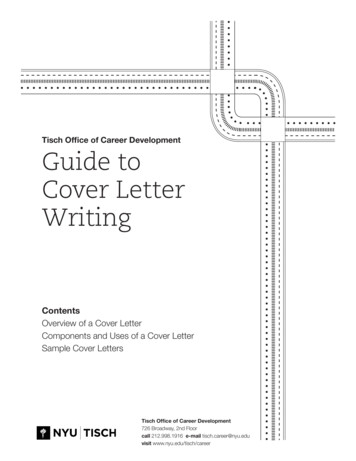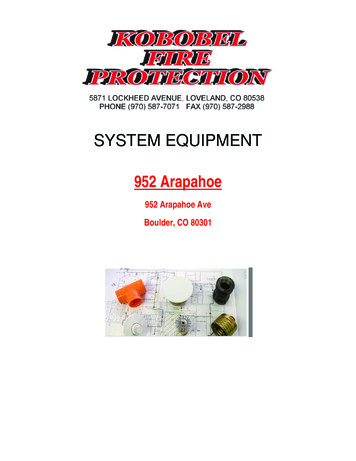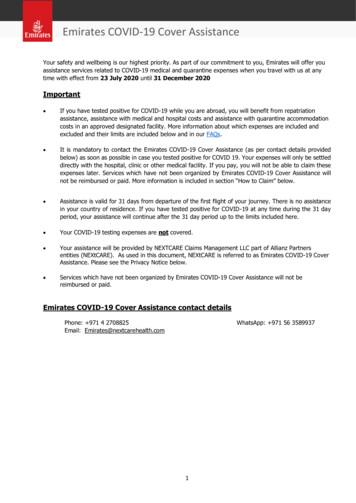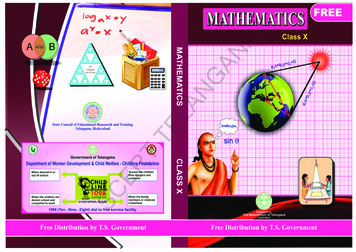
Transcription
TERSCAANNGTELA
SIGNS AND SYMBOLS OF SCHOOL MATHEMATICSINSTRUCTIONS TO STUDENTSFFFFFFFFFFFFFWe wish you all the bestMathematical meaningplus or minusAdd or SubstractARead asnot equal tounequalthereforelogical flow of a statementinfinitenot finiteis similar tosame in geometrical shapeis congruent tosame shape and same sizeis identically equal toequivalent statementsfor alluniversal quantifiersquare root ofsquare root of a numbercube root ofcup ofcube root of a numberunion of setscap ofintersection of setsphisymbol for golden ratiopercent ofper hundreddegreeangle measuredelta / trianglebelongs tosymmetric difference in sets/symbol of trianglean element belong to a particular setequivilent toone to one correspondencealfa,beta,gammagreek lettetrs to represent zeroes of polynomialmuuniversal set symbolpicircumference of a circle / diametersigmasum of scoresAN NGFSign/symbolTELAFTFERFPictures/figures are provided for many items/situations for better understanding ofthe concepts in the text book.You have to read them carefully in relation with theconcepts.Clarify your doubts with the help of your teachers while you are doing the activitesrelated to the concepts time to time.''Do this”Problems are meant to test your progress immediately after learning aconcept.So you have to do these problems on your own.Check these with your teacher.”Try these”items in every chapter are provided to sharpen your ideas andthoughts.some logic will be there behind these questions.You have to try all thesequestions with out fail.Do this and Try these problems are meant to solve in the class room under theguidance of your teacher.Do not leave them at all.The questions under “Think discuss and write” are given to test your analytical ability.Youcan answer these questions by discussing in groups.The exercises given at the end of some sub topics arerelated to the concepts learnedto a particular level.You try to solve these problems on your own.Do not copy themfrom guides and from other sources.Some projects given in in the textbook are meant to be done with proper plan andguidance with the teacher.you can do this in a group.A report is to be submitted at theend of the project.Some blank spaces are provided in tables,try these exercises to facilitate you toanswer quickely.You can fill it in the text book it self.Every student is required to finish the day's work on the same day it self.Donot postpone it.You may feel burden later.Try to collect some more information to create some similar problems based on theconcepts you have learned.Ask your friends to solve your questions.Games,Puzzles provided in the textbooks shall encourage you to feel joy in doingmaths.For recreation collect some more .You should always connect the concepts learned in the class with other subject areas and situations out side the class room.You have to develop abilities with regard to academic standards prescribed at theend of the text book based on the syllabus .The academic standards at the secondary level are based on a) Problem solving 2)Reasoning and Proof 3)Mathematicalcommunication 4)Connections 5)Representation.You have to go through various reference books,Internet,Forums for finding differentways of solutions for a problem and for better understanding of the concepts.Optional exercises are provided to think critically to solve certain problems.Theseexercises will help you to face Talent tests conducted at national level on par withother students.The appendix chapter “Mathematical modelling” will help you to know modelling ofmathematical concepts in the fields of business,Agriculture,Stock markets etc,Youcan see the connection of mathematics with different areas.Syllabus is also provided at the end of the textbook for your reference that how youare making your progress.You can also compare with others.SCF3 φ%oΔ α, β, γμπσsin θ, cos θ, tan θxsin theta,cos theta,tan theta trigonometric ratiosx bararithmetic meanlog x to the base alogarthemic functionpoint (a, b)ordered pair (a, b)mod xabsolute value of a real numberP of xa polynomial function in xP of ESinceprobability of an eventreasoning at a stage rupeesymbol of Indian rupee is parallel toparallel lines is perpendicular tomaking 90 degree with a lineflower bracketused to set notationarc PQarc of a circlea squaresquare of a numberanglesymbol of anglethetameasurement of an angleloga x(a, b) x P(x)P(E) { }PQa θ2
Class-XANAMathematicsTextbook Development & Publishing Committee:Sri. G. Gopal Reddy,Director, SCERT, Hyderabad.Executive Chief Organiser:Sri. B. Sudhakar,Director, Govt. Text Book Press, Hyderabad.Organising Incharge:Dr. Nannuru Upender Reddy,Prof. & Head, Curriculum & Text Book Department,SCERT, Hyderabad.TELAC HAIRPERSONNGChief Production OfficerFORP OSIT ION P APER AND M ATHEMATICS C URRICULUMD E VE LO PM EN TANDT EXTBOOKProf. V.KannanTDepartment of Mathematics and Statistics, HCU, HyderabadC HIEF A DVISORSDr. H.K.DewanEducational Advisor, Vidya Bhavan SocietyERSri Chukka RamaiahEminent Scholar in Mathematics,SCTelangana, Hyderabad.Udaipur, RajasthanPublished by:The Government of Telangana, HyderabadRespect the LawGet the Rights(i)Grow by EducationBehave Humbly
First Published 2014NGNew Impressions 2015, 2016, 2017, 2018, 2019All rights reserved.TELANo part of this publication may be reproduced,stored in a retrieval system, or transmitted, in anyform or by any means without the prior permission inwriting of the publisher, nor be otherwise circulatedin any form of binding or cover other than that inwhich it is published and without a similar conditionincluding this condition being imposed on the subsequent purchaser.The copy right holder of this book is the Directorof School Education, Hyderabad, Telangana.SCERTThis Book has been printed on 70 G.S.M. MaplithoTitle Page 200 G.S.M. White Art CardFree distribution by T.S. Government 2019-20Printed in Indiaat the Telangana Govt. Text Book Press,Mint Compound, Hyderabad,Telangana.(ii)AAN Government of Telangana, Hyderabad.
W RITERSAText Book Development CommitteeDevSri Tata Venkata Rama KumarSri Gottumukkala V.B.S.N. RajuH.M., ZPHS, Mulumudi, SPS NelloreSA, Mpl. High School, Kaspa, Vizianagaram.Sri Padala Suresh KumarPGT. APTWRS, Chandrashekarapuram, SPS NelloreSA,GHS, Vijayanagar Colony, Hyderabad.Sri G. Anantha ReddySri Peddada D.L.Ganapati SharmaDr. Poondla RameshSri Sardar Dharmendra SinghSri Komanduru SreedharacharyuluSri Nagula RaviRetd. Headmaster, Ranga ReddyANSri Soma Prasada BabuSA,GHS, Zamisthanpur, Manikeshwar Nagar, Hyd.SA, ZPHS, Dannur (B), AdilabadNGLecturer, Government lASE, SPS NelloreSA, ZPHS, Rangaipally, MedakSA, ZPHS, Lokeshwaram, AdilabadSri Kandala RamaiahSri Kakulavaram Rajender ReddySA, ZPHS, Kasimdevpet, WarangalCo-ordinator, SCERT, T.S., Hyderabad.Sri Ramadugu Lakshmi Narsimha MurthySA, ZPHS, Thupranpet, NalgondaC HIEF E DITORDr. H.K.DewanTELAEducational Advisor, Vidya Bhavan SocietyUdaipur, RajasthanE DITORSProf. V. Shiva RamaprasadProf. N.Ch.Pattabhi RamacharyuluRetd. Dept. of Mathematics,Osmania University, HyderabadRetd., National Institute of Technology,WarangalSri A. Padmanabham (Rtd.)Dr. G.S.N. Murthy (Rtd.)Head of the Dept. of MathematicsMaharanee College,Peddapuram, East Godavari Dist.Reader in MathematicsRajah R.S.R.K.Ranga Rao College,Bobbili, Vizianagaram Dist. (A.P.)C O -O R D I N AT O R SSri Kakulavaram Rajender ReddyCo-ordinator, SCERT, Hyderabad.Sri K. Narayan ReddyLecturer, SCERT, HyderabadTA CADEMIC S UPPORT G ROUP M EMBERSSri Hanif PaliwalMs. Preeti MishraVidya Bhawan Education Resource Centre, UdaipurVidya Bhawan Education Resource Centre, UdaipurMs. Tanya SaxenaVidya Bhawan Education Resource Centre, UdaipurERMrs. Snehbala JoshiVidya Bhawan Education Resource Centre, UdaipurMs. M. ArchanaDepartment of Mathematics and Statistics, University of HyderabadI LLUSTRATIONS AND D ESIGN T EAMLLUSTRAUSTRATIONSSri. Prashant SoniSCIllustrator, Vidya Bhawan Education Resource Centre, UdaipurSri S. M. IkramSri Bhawani ShankerDTP Operator,Vidya Bhawan Education Resource Centre, UdaipurDTP Operator,Vidya Bhawan Education Resource Centre, UdaipurSri Sunkara Koteswara RaoSmt. Sunkara SunithaDTP Operator,Pavan Graphics, Vignanpuricolony,Vidyanagar, Hyderabad.DTP Operator,Pavan Graphics, Vignanpuricolony,Vidyanagar, Hyderabad.Sri Kannaiah Dara, DPO,SCERT, Telangana, Hyderabad.C OVER P AGE D ESIGNINGSri. K. Sudhakara Chary, HM, UPS Neelikurthy, Mdl.Maripeda, Dist. Warangal(iii)
ANAForewordEducation is a process of human enlightenment and empowerment. Recognizingthe enormous potential of education, all progressive societies have committed themselvesto the Universalization of Elementary Education with a strong determination to providequality education to all. As a part of its continuation, universalization of SecondaryEducation has gained momentum.TELANGIn the secondary stage, the beginning of the transition from functional mathematicsstudied upto the primary stage to the study of mathematics as a discipline takes place.The logical proofs of propositions, theorems etc. are introduced at this stage. Apart frombeing a specific subject, it is connected to other subjects involving analysis and throughconcomitant methods. It is important that children finish the secondary level with thesense of confidence to use mathematics in organising experience and motivation tocontinue learning in High level and become good citizens of India.I am confident that the children in our state Telangana learn to enjoy mathematics,make mathematics a part of their life experience, pose and solve meaningful problems,understand the basic structure of mathematics by reading this text book.For teachers, to understand and absorb critical issues on curricular and pedagogicperspectives duly focusing on learning in place of marks, is the need of the hour. Alsocoping with a mixed class room environment is essentially required for effective transactionof curriculum in teaching learning process. Nurturing class room culture to inculcatepositive interest among children with difference in opinions and presumptions of life style,to infuse life in to knowledge is a thrust in the teaching job.TThe afore said vision of mathematics teaching presented in State Curriculum Framework (SCF -2011) has been elaborated in its mathematics position paper which alsoclearly lays down the academic standards of mathematics teaching in the state. The textbooks make an attempt to concretize all the sentiments.SCERThe State Council for Education Research and Training Telangana appreciates thehard work of the text book development committee and several teachers from all over thestate who have contributed to the development of this text book. I am thankful to theDistrict Educational Officers, Mandal Educational Officers and head teachers for makingthis possible. I also thank the institutions and organizations which have given their time inthe development of this text book. I am grateful to the office of the Commissioner andDirector of School Education for extending co-operation in developing this text book. Inthe endeavor to continuously improve the quality of our work, we welcome your commentsand suggestions in this regard.Place : HyderabadDateDirector: 17 October, 2013SCERT, Hyderabad(iv)
ANAPrefaceNGWith this Mathematics book, children would have completed the three years oflearning in the elimentary classes and one year of secondary class. We hope thatMathematics learning continues for all children in class X also however, there may besome children from whom this would be the last year of school. It is, therefore, importantthat children finish the secondary level with a sense of confidence to use Mathematics inorganizing experience and motivation to continue learning.TELAMathematics is essential for everyone and is a part of the compulsory program forschool education till the secondary stage. However, at present, Mathematics learning doesnot instill a feeling of comfort and confidence in children and adults. It is considered to beextremely difficult and only for a few. The fear of Mathematics pervades not just childrenand teachers but our entire society. In a context where Mathematics is an increasing partof our lives and is important for furthering our learning, this fear has to be removed. Theeffort in school should be to empower children and make them feel capable of learningand doing Mathematics. They should not only be comfortable with the Mathematics in theclassroom but should be able to use it in the wider world by relating concepts and ideas ofMathematics to formulate their understanding of the world.TOne of the challenges that Mathematics teaching faces is in the way it is defined.The visualization of Mathematics remains centered around numbers, complicatedcalculations, algorithms, definitions and memorization of facts, short-cuts and solutionsincluding proofs. Engaging with exploration and new thoughts is discouraged as thecommon belief is that there can be only one correct way to solve a problem and thatMathematics does not have possibilities of multiple solutions.SCERThrough this book we want to emphasize the need for multiple ways of attemptingproblems, understanding that Mathematics is about exploring patterns, discoveringrelationships and building logic. We would like all teachers to engage students in readingthe book and help them in formulating and articulating their understanding of differentconcepts as well as finding a variety of solutions for each problem. The emphasis in thisbook is also on allowing children to work with each other in groups and make an attemptto solve problems collectively. We want them to talk to each other about Mathematics andcreate problems based on the concepts that have learnt. We want everybody to recognizethat Mathematics is not only about solving problems set by others or learning proofs andmethods that are developed by others, but is about exploration and building new arguments.Doing and learning Mathematics is therefore about each person coming up with her ownmethods and own rules.(v)
AANNGClass X is the final year of secondary level students and their have already dealtabout the consolidation of initiations. They have already learnt also to understand thatMathematics consists of ideas that are applied in life situations but do not necessarilyarise from life. We would also like children to be exposed to the notion of proof and recognizethat presenting examples is not equivalent to proof with modeling aspects.TTELAThe purpose of Mathematics as we have tried to indicate in the preface as well asin the book has widened to include exploring mathematization of experiences. This meansthat students can begin to relate the seemingly abstract ideas they learn in the classroomsto their own experiences and organize their experiences using these ideas. This requiresthem to have opportunity to reflect and express both their new formulations as well astheir hesitant attempt on mathematizing events around them. We have always emphasizedthe importance of language and Mathematics interplay. While we have tried to indicate atmany places the opportunity that has to be provided to children to reflect and use language.We would emphasise the need to make more of this possible in the classrooms. Wehave also tried to keep the language simple and close to the language that the child normallyuses. We hope that teachers and those who formulate assessment tasks would recognizethe spirit of the book. The book has been developed with wide consultations and I mustthank all those who have contributed to its development. The group of authors drawn fromdifferent experiences have worked really hard and together as a team. I salute each ofthem and look forward to comments and suggestions of those who would be users of thisbook.SCERText Book Development Committee(vi)
Class-XCHAPTERNUMBERCONTENTS01Real Numbers02Sets03Polynomials04Pair of Linear Equations inTwo Variables05Quadratic Equations12October105 - 12806Progressions11January129 - 16207Coordinate Geometry12November163- 19408Similar Triangles18July, August195 - 22809Tangents and Secants to a Circle15November229 - 24810Mensuration10December249 - 272Trigonometry15August273 - 297ERANAMathematicsJuneNG15PAGENUMBER1 - 2808June29 - 5008July51 - 7615SeptemberTELAT11NO. OF SYLLABUS TO BEPERIODS COVERED DURING77 - 10412Applications of Trigonometry08September298 - 30813Probability10January309 - 32614Statistics15July327 - 35608January357 - 369SCAppendix Mathematical ModellingAnswers370 - 388RevisionFebruary(vii)
Jana-gana-mana-adhinayaka, jaya thaNGDravida-Utkala-BangaAN- Rabindranath TagoreAOUR NATIONAL hi-taranga.TELATava shubha name jage,Tava shubha asisa mage,Gahe tava jaya gatha,Jana-gana-mangala-dayaka jaya heBharata-bhagya-vidhata.Jaya he, jaya he, jaya he,TJaya jaya jaya, jaya he!ERPLEDGE- Pydimarri Venkata Subba Rao“India is my country. All Indians are my brothers and sisters.SCI love my country, and I am proud of its rich and varied heritage.I shall always strive to be worthy of it.I shall give my parents, teachers and all elders respect,and treat everyone with courtesy. I shall be kind to animalsTo my country and my people, I pledge my devotion.In their well-being and prosperity alone lies my happiness.”(viii)
ANReal NumbersA1NG1.1 INTRODUCTION"God made the integers. All else is the work of man" - Leopold Kronecker.TELALife is full of numbers. Imagine the moment you were born. Your parents probably notedthe time you were born, your weight, your length and the most important, counted your fingersand toes. From then, numbers accompany you throughout life.What are the other contexts where you deal with numbers?We use the numbers to tell our age to keep track of our income and to find the savings afterspending certain money. We measure our wealth also.In this chapter we are going to explore the notion of the numbers. Numbers play afundamental role within the realm of mathematics. We will come to see the richness ofnumbers and delve into their surprising traits. Some collection of numbers fit so welltogether that they actually lead to notions of aesthetics and beauty.TLet us look in to a puzzle.SCERIn a garden of flowers, a swarm of bees is setting in equal number on flowers. Whenthey settle on two flowers, one bee will be left out. When they settle on three flowers, twobees will be left out. When they settle on four flowers, three bees will be left out. Similarly,when they settle on five flowers no bee will be left out. If there are at most fifty bees, howmany bees are there in the swarm?Let us analyse and solve this puzzle.Let the number of bees be 'x'. Then working backwards we see that x 50.If the swarm of bees is divided into 5 equal groups no bee will be left, which translates tox 5a 0 for some natural number 'a'.
Class-X MathematicsA2ANIf the swarm is divided in to 4 equal groups 3 bees will be left out and it translates tox 4b 3 for some natural number b.If the swarm is divided into 3 equal groups 2 bees will be left out and it translates tox 3c 2 for some natural number c.NGIf the swarm is divided into 2 equal groups 1 bee will be left out and it translates tox 2d 1 for some natural number d.That is, in each case we have a positive integer y (in this example y takes values 5, 4, 3and 2 respectively) which divides x and leaves remainder 'r' (in our case r is 0, 3, 2 and 1respectively), that is smaller than y. In the process of writing above equations, unknowingly,we have used Division Algorithm.TELAGetting back to our puzzle. To solve it we must look for the multiples of 5, which satisfy allthe conditions, because x 5a 0.If a number leaves remainder 1 when it is divided by 2 we must consider odd multiplesonly. In this case we have 5, 15, 25, 35 and 45. Similarly if we check for the remaining twoconditions you will get 35.Therefore, the swarm of bees contains 35 bees.Let us verify the answer.When 35 is divided by 2, the remainder is 1. That can be written asT35 2 17 1ERWhen 35 is divided by 3, the remainder is 2. That can be written as35 3 11 2When 35 is divided by 4, the remainder is 3. That can be written as35 4 8 3SCand when 35 is divided by 5, the remainder is '0'. That can be written as35 5 7 0Let us generalise this. For each pair of positive integers a and b (dividend and divisorrespectively), we can find the whole numbers q and r (quotient and remainder respectively)satifying the relationa bq r, 0 r bFree Distribution by T.S. Government 2019-20
3AReal NumbersAND O T HISFind q and r for the following pairs of positive integers a and b, satisfying a bq r.(i) a 13, b 3(ii) a 80, b 8T HINKANDD ISCUSSNG(iv) a 132, b 11(iii) a 125, b 5In questions of above "DO THIS", what is the nature of q and r?TELATheorem-1.1 : (Division Algorithm) : Given positive integers a and b, there exist unique pairof integers q and r satisfying a bq r, 0 r b.This result, was first recorded in Book VII of Euclid's Elements. Euclid's algorithm isbased on this division algorithm.Euclid's algorithm is a technique to compute the Highest common factor (HCF) of twogiven integers. Recall that the HCF of two positive integers a and b is the greatest positiveinteger d that divides both a and b.TLet us find the HCF of 60 and 100, through the following activity.ERACTIVITYTake two paper strips of equal width and having lengths 60 cm, and 100 cm long. Ourtask is to find the maximum length of a strip which can measure both the strips withoutleaving any part.SCTake 60 cm strip and measure the 100 cm strip with it. Cut off the left over 40 cm. Now,take this 40 cm strip and measure the 60 cm strip with it. Cut off the left over 20 cm. Now,take this 20 cm strip and measure the 40cm with it.Since nothing is left over, we may conclude that 20cm strip is the longest strip which canmeasure both 60 cm and 100 cm strips without leaving any part.Free Distribution by T.S. Government 2019-20
Class-X MathematicsA4Let us link the process we follwed in the "Activity" to Euclid's algorithm to get HCF of 60ANand 100.When 100 is divided by 60, the remainder is 40100 (60 1) 40Now consider the division of 60 with the remainder 40 in the above equation and applyNGthe division algorithim60 (40 1) 20Now consider the division of 40 with the remainder 20, and apply the division lemmaTELA40 (20 2) 0Notice that the remainder has become zero and we cannot proceed any further. We claimthat the HCF of 60 and 100 is the divisor at this stage, i.e. 20. (You can easily verify this by listingall the factors of 60 and 100.) We observe that it is a series of well defined steps to find HCF of60 and 100. So, let us state Euclid's algorithm clearly.To obtain the HCF of two positive integers, say c and d with c d, follow the steps below:Step 1 : Apply Euclid's division lemma, to c and d. So, we find unique pair of whole numbers,q and r such that c dq r, 0 r d.TStep 2 : If r 0, d is the HCF of c and d. If r ¹ 0, apply the division lemma to d and r.ERStep 3 : Continue the process till the remainder is zero. The divisor at this stage will be therequired HCF.This algorithm works because HCF (c, d) HCF (d, r) where the symbol HCF (m, n)SCdenotes the HCF of any two positive integers m and n.DO THISFind the HCF of the following by using Euclid algorithm.(i) 50 and 70(ii) 96 and 72(iii)300 and 550(iv) 1860 and 2015Free Distribution by T.S. Government 2019-20
ANDD ISCUSSANT HINK5AReal NumbersCan you find the HCF of 1.2 and 0.12? Justify your answer.Euclid's algorithm is useful for calculating the HCF of very large numbers, and it was one ofthe earliest examples of an algorithm that a computer had been programmed to carry out.NGRemarks :Euclid's algorithm and division algorithm are so closely interlinked that people often callformer as the division algorithm also.2.Although Division Algorithm is stated for only positive integers, it can be extended for allintegers a and b where b ¹ 0. However, we shall not discuss this aspect here.TELA1.Division algorithm has several applications related to finding properties of numbers. Wegive some examples of these applications below:Example 1 : Show that every positive even integer is of the form 2q, and that every positive oddinteger is of the form 2q 1, where q is some integer.Solution : Let a be any positive integer and b 2. Then, by division algorithm, a 2q r, forsome integer q 0, and r 0 or r 1, because 0 r 2. So, a 2q or 2q 1.ERTIf a is of the form 2q, then a is an even integer. Also, a positive integer can be either evenor odd. Therefore, any positive odd integer is of the form 2q 1.Example 2 : Show that every positive odd integer is of the form 4q 1 or 4q 3, where q issome integer.SCSolution : Let a be a positive odd integer, and b 4. We apply the division algorithm for a andb 4.We get a 4q r, for q 0, and 0 r 4. The possible remainders are 0, 1, 2 and 3.That is, a can be 4q, 4q 1, 4q 2, or 4q 3, where q is the quotient. However, sincea is odd, a cannot be 4q 2 (2q) or 4q 2 2(2q 1) (since they are both divisible by 2).Therefore, any odd integer is of the form 4q 1 or 4q 3.Free Distribution by T.S. Government 2019-20
AClass-X Mathematics61.Use Euclid's algorithm to find the HCF of(i) 900 and 270(ii) 196 and 38220ANEXERCISE - 1.1(iii) 1651 and 2032Use division algorithm to show that any positive odd integer is of the form 6q 1,or 6q 3 or 6q 5, where q is some integer.3.Use division algorithm to show that the square of any positive integer is of the form3p or 3p 1.4.Use division algorithm to show that the cube of any positive integer is of the form 9 m,9m 1 or 9m 8.5.Show that one and only one out of n, n 2 or n 4 is divisible by 3, where n is anypositive integer.TELANG2.1.2 THE FUNDAMENTAL THEOREM OF ARITHMETICWe know from Division Algorithm that for given positive integers a and b there existunique pair of integers q and r satifyinga bq r,0 r bTTHINK - DISCUSSERIf r 0, then what is the relationship between a, b and q in a bq r ?From the above discussion you might have concluded that if a bq, 'a' is divisible by'b' then we can say that 'b' is a factor of 'a'.SCFor example we know that 24 2 1224 8 3 2 2 2 3We know that, if 24 2 12 then we can say that 2 and 12 are factors of 24. We canalso write 24 2 2 2 3 and you know that this is the prime factorisation of 24.Free Distribution by T.S. Government 2019-20
Real Numbers7ANALet us take any collection of prime numbers, say 2, 3, 7, 11 and 23. If we multiply someor all of these numbers, allowing them to repeat as many times as we wish, we can produceinfinitely many large positive integers. Let us observe a few :2 3 11 667 11 23 17713 7 111 23 53132 3 7 111 23 1062623 3 73 823222 3 7 111 23 21252NGNow, let us suppose your collection of primes includes all the possible primes. What isyour guess about the size of this collection? Does it contain only a finite number of primes orinfinitely many? In fact, there are infinitely many primes. So, if we multiply all these primes in allpossible ways, we will get an infinite collection of composite numbers.TELANow, let us consider the converse of this statement i.e. if we take a composite numbercan it be written as a product of prime numbers? The following theorem answers the question.Theorem-1.2 : (Fundamental Theorem of Arithmetic) : Every composite number can beexpressed (factorised) as a product of primes, and this factorization is unique, apartfrom the order in which the prime factors occur.This gives us the Fundamental Theorem of Arithmetic which says that every compositenumber can be factorized as a product of primes. Actually, it says more. It says that any givencomposite number can be factorized as a product of prime numbers in a ‘unique’ way, exceptfor the order in which the primes occur. For example, when we factorize 210, we regard 2 3T 5 7 as same as 3 5 7 2, or any other possible order in which these primes arewritten. That is, given any composite number there is one and only one way to write it as aERproduct of primes, as long as we are not particular about the order in which the primes occur.In general, given a composite number x, we factorize it as x p1.p2.p3 .pn, wherep1, p2, p3., pn are primes and written in ascending order, i.e., p1 p2 . pn. If wecombine the equal primes, we will get powers of primes. Once we have decided that theorder will be ascending, then the way the number is factorised, is unique. For example,SC27300 2 2 3 5 5 7 13 22 3 52 7 13DO THISExpress 2310 as a product of prime factors. Also see how your friends havefactorized the number. Have they done it same as you? Verify your final product withyour friend’s result. Try this for 3 or 4 more numbers. What do you conclude?Free Distribution by T.S. Government 2019-20
AClass-X Mathematics8Let us apply fundamental theorem of arithmeticANExample 3. Consider the numbers of the form 4n where n is a natural number. Check whetherthere is any value of n for which 4n ends with zero?NGSolution : If 4n is to end with zero for a natural number n, it should be divisible by 2 and 5. Thismeans that the prime factorisation of 4n should contain the prime number 5 and 2. But it is notpossible because 4n (2)2n so 2 is the only prime in the factorisation of 4n. Since 5 is not presentin the prime factorization, there is no natural number n for which 4n ends with the digit zero.You have already learnt how to find the HCF (Highest Common Factor) and LCM(Lowest Common Multiple) of two positive integers using the Fundamental Theorem ofArithmetic in earlier classes, without realizing it! This method is also called the primefacto
The copy right holder of this book is the Director of School Education, Hyderabad, Telangana. This Book has been printed on 70 G .S.M. Maplitho Title Page 200 G.S.M. White Art Card Printed in India at the Telangana Govt. Text Book Press, Mint Compound, Hyderabad, Telangana. Free dis

